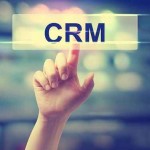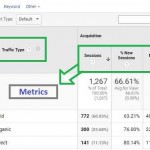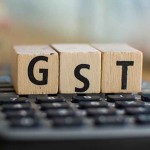Smart Use of Predictive Analytics in Retail Sector

Cut-throat competition and rising adoption of technology in the retail industry are both changing the ecosystem. But it won’t be wrong to say that predictive analysis as a technology has proven to be a life saver for many retailers.
Predictions have always been associated with humankind from time immemorial. When future forecast has made its entry into the world of economics and business, it was initially largely dismissed as sort of crystal ball gazing and unreliable. Times changed with growing use of technology, predictive analytics today is synonymous with an invaluable technological advantage tool. Today almost every retailer is seeking customer behavior and trends to increasesales.
The increasing competition in the retail space including both online and brick and mortar retail has resulted inretailers using new age tools to offer better services and to hold on to customers in the long run. From the use of data to conclude inventory needs, sales forecast using averages or generalities, predictive data analytics allows for micro level forecast for each individual consumer.
So the next time when you are running out of sugar and receive a text message on your phone regarding discounted deals on sugar from your retailer don’t dismiss it as a mere coincidence. It is predictive data analytics at work.
Five smart uses of predictive analytics
Many retailers and top management of retail chains believe that predictive analytics is limited in its scope to make better marketing plans and targeting customers. While mapping customers with targeted products and plans is definitely a part of smart predictive analytics, there is a whole lot more that can add value to an organization and its revenues.
Here are five smart uses of predictive analytics that retailers can make use of.
Personalized engagement and promotions
Product recommendation based on customer behavior helps retailers target better.
Collection of data from various touch points allows big data’s smart algorithms to obtain customer specific insights. So everything from a customer’s purchase history, purchase pattern, interests, and page or product views can be decoded in great detail. Using these analytics as its input, predictive analytics allows for a definite forecast in terms of what the consumer is likely to purchase and when. As a result retailers can make use of such predictive analytics and recommend relevant products based on their behavior.
Knowing when a customer is likely to purchase a product, recommendation of a promotional offer on the same can increase the chances of a successful sale multifold.
Building targeting campaigns
Campaign planning is a great help provided by predictive analytics.
Enterprises including retail giants spend a lot of money for developing targeted campaigns. Predictive analytics can help enterprises in decoding the right campaign, which can offer an effective message or product highlight for every single customer.
With the use of predictive analytics retailers can devise a general targeted campaign and then streamline it for every consumer leading to a higher conversion rate.
Smart pricing and inventory management
Flash sales are totally passé in retail now. What works is round the clock competitive pricing.
Pricing of a product plays an essential role in the overall success of the product in the market. Predictive analysis helps in correlating demand, supply, product’s pricing history, inventory levels as well as any competition history to reach a final price.
Retailers are now making use of predictive analytics to offer the best price at all times for every product instead of having just one ‘end of season sale’. A price reduction can lead to higher sales and profitability on volume. Such a strategy can be developed using the advantage of predictive analytics.
Product recommendation engines
Product recommendation engines are a gift by predictive analytics to the world of retailers.
Online retailers have been the pioneers in using product recommendation engines for buyers. Shoppers are offered shortlisted products by using their purchase history, interest and browsing trends. All of this is possible due to predictive analytic tools used by retailers.
Now brick and mortar store retailers are also using such product recommendation engines to increase their up-sale and cross-sale opportunities.
Smarter revenue forecasting
Revenue forecast goes a long way in helping retailers re-strategize their business at every step.
Enterprises have been using historical data from consumers to conclude their revenue forecasting numbers. The one problem in such a model is that it is possible that many of the previous consumers counted for in such trends may no longer be active with the enterprise or may have shifted to another retailer. Predictive analytical tools offer a revenue forecast based on historical trends as well as on new footfalls in real time based on previous trends.
Conclusion: Predictive analytics are helping retailers to make use of smart insights and trends for better business.
shivakumar1 Posts
Shiva Kumar is a Digital Marketing Analyst. Currently working for Happiest Minds Technologies who focused on marketing solutions. He writes more about the latest marketing trends which help techies to manage their marketing growth.








0 Comments